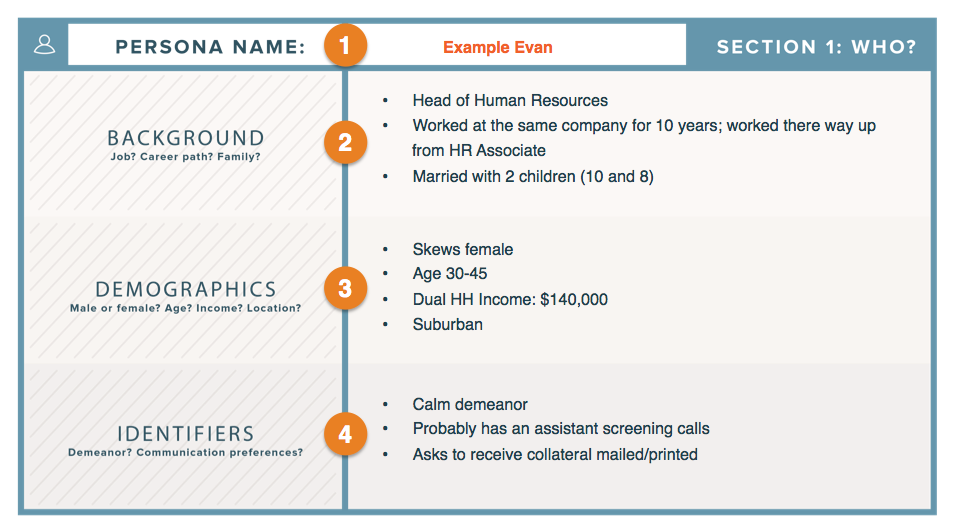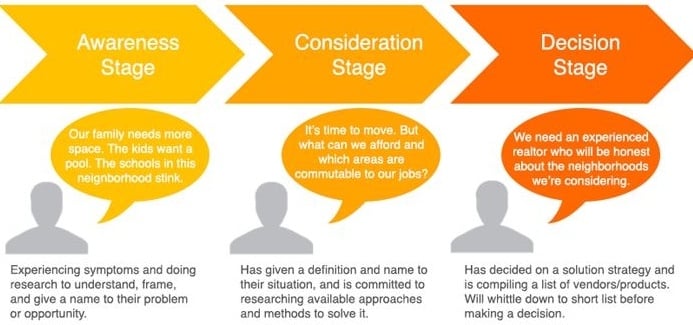9x steps on how to lay the 2020 foundations for a winning B2B growth strategy.

If you are from the technology, manufacturing or the healthcare sector you’re probably pretty familiar with a complex buying process. Which means you’re just as much a consultant and a teacher as you are a salesperson.
The core skill needed into today’s busy marketplace is to know how to listen, learn and understand the notion of a buyers pain.
Your role is to educate prospects on their symptoms and then show how you solve their particular problem better than your competitors.
B2B Buyers have had to evolve their approach because of complexities within their own decision making process.
An elongated sales cycle, the various vested interests of stakeholders, a focus on cost and a multitude of different vendor options available.
The one constant is growth. For some, marketing is branding, while others view marketing merely as a way to attract leads into the sales pipe-line to fuel growth.
To me marketing has always been about defining your ideal buyer, how you position your product or company in a way that shows you understand the buyers pain better that the anybody else, and the manner in which you guide your leads and prospects to find your solution to be the best fit.
Long term real growth occurs when you build on a strong marketing foundation with a strategy for growth.
When you are starting out on a path to growth, think first of what you can manage, may be conquer a small market first.
Probably only a small portion of any population will be interested in your solution. If you try to market to everyone, you waste both time and money.
Typically if you have a product but it is not in demand it’s probably because it doesn’t solve a problem that enough people are looking to address.
To learn how to map out your growth path, we have come up with 9 x steps to follow:
Step 1. What Are Your Critical Success Factors?
To have an impact with your business in today’s dynamic market place, the more appealing you can position your proposition to customers the more likely you will be able to drive visitor traffic and generate leads.
Whether you are a start-up, an established or mature business it is important to plan and document a growth strategy around your strengths.
When you are starting out with a plan there are a few simple questions that you need to address:
- Why does my company/brand exist?
- Why would customers use you?
- How will we change the market and the world around us?
- What are the values and beliefs that drive my company and guide my brand?
- How will we do things differently?
Now that you have started to think about what are the critical success factors of your business, it is vital to pinpoint what are your customer’s challenges or goals. What is it that your customers are addressing by using your product or service?
Step 2. Do You Know The Wants & Needs Of Your Buyers?
An important marketing lesson I’ve learned is that when you have a B2B product that is highly complex or technical in nature your customers may not actually realise or simply ignore the fact that they need what you’re offering.
So, instead of focusing on your own needs to close a sale, focus on what is the buyer’s pain that they need to address – talk about the problem. Start conversations around your buyer’s plans, goals and challenges. What options do they have, what are the consequences if they fail?
Without knowing who your ideal customers are, their backgrounds, goals, pain and how your product or service will benefit them it’s very difficult to create content to attract leads. A buyer persona is a semi-fictional representation of your ideal customer based on available market research and your own findings.
To make a campaign successful, we will need to use content that the buyer persona will find valuable enough to download in exchange for their contact details. This is all based on the insight you build up from the profile.
Below is an example of a buyer persona template sourced from HubSpot.

Step 3. Digital Moments In A Buyer’s Journey
To avoid falling into the trap of building your sales process around your own needs, a business needs to specifically address the buyer’s pain.
Buyers don’t want to be prospected, nurtured or closed – these steps add zero value to information that they can source themselves online.
So an important step for developing an inbound sales perspective is to define the buyer’s journey to be able to adopt a “buyer-centric” approach.
A few simple questions to ask yourself when you are formulating a buyers journey are:
- Buyer Stage – at what stage is your prospective buyer at; Awareness, Consideration or Decision?
- What information needs do your prospects have and how are they researching the subject?
- For your particular type of buyer persona, do they have a preferred way to consume the content or interact with you?
- Who are the customers who tend to shy away from your products and services?
- Why do they do so? Is it confusion about the product itself and how it works?
- Did they have a negative experience previously? Do the issues your product is meant to solve simply make your customer uncomfortable?
Understanding who your customer is and how they behave can – and should – form the basis of your marketing and growth strategy, combined with knowing how your products solves their problem.
You will need to review and detail the journey your customers take and identify those points (customer touch points) that you may be able to influence.
Where do you have contact with them, is there a particular order to your buyer’s journey, and where could you influence them most?
Below is an example of the stages of the buyers journey, as a lead starts out becoming aware of you, to as a prospect considering your solution as an option then making a purchase – source HubSpot.

Step 4. Is Your Sales Funnel Effective?
The idea of the funnel is that the number of leads grows smaller as they move down the funnel. At the top of the funnel (TOFU), there are many people who you will want to make aware of your brand.
The middle of the funnel (MOFU) is smaller, as there are less people who would actually consider buying from you, and the bottom of the funnel (BOFU) is even smaller, as you narrow down the number of people who are in a position to buy from you.
We all know that trying to lead an uncertain buyer through the sales funnel, usually ends up with failure in either a delayed or defeated selling process. To prevent prematurely presenting a solution to a buyer ask yourself the following questions:
- Do you have a Customer Lifecycle definition (suspects, prospects, leads, contacted, converted, lapsed or lost)?
- What is your industry, are there particular buying patterns, preferred contact channels, decision maker profiles?
- Do you communicate differently as customers go through the various stages in the funnel?
- Do you know how to qualify a lead, and when to pass it on to the sales team?
As a visitor moves along the funnel, there will be different content formats and types used to address the questions and nurture engaged prospects.

Step 5. Your shop window – “the Website”
For most B2B businesses their website has now become a “shop window”, designed primarily to help attract qualified and interested visitors. You did all that hard work to get the visitor to your website, now you have to make sure that it is everything they thought it would be and more. It is critical now to look at your website through the eyes of your customer.
- Do you have content presented for a clearly defined buyers personas?
- Is content more sell, sell, sell rather than taking it one stage at a time and focusing on education?
- Are your conversion opportunities too high a commitment?
- Do you have a mobile/responsive design?
- Are you keeping up to date with you ongoing SEO strategy?
Step 6. How Are You Being Found – “SEO” & Keywords
Digital marketing has changed significantly over the past few years, and yet search engine optimisation (SEO) remains one of the most effective inbound marketing strategies.
SEO is not going to improve your onsite conversion rate by itself, but it will help visibility and, hopefully, increase your traffic levels if you properly optimise your website for search.
Content quality is an important aspect of SEO. That means you are distributing content that answers a visitors questions with the right level of information depending on where they are in their buyer’s journey.
We’ll always need to use written language for search queries because search engines store keyword-based indexes. These stored keywords are the words that your buyer personas use to search and therefore are a critical part of your content production.
The goal is not to rank highly for all keywords, just those that people are searching for when they want what you are selling.
It’s easy to get tied up with the detail, especially with SEO – take a step back, focus on what you can influence, and avoid those things that “hurt” your SEO. Content and SEO are a match made in heaven, identify how you can get them working together.
Step 7. How Do You Deal With A Complex Sales Cycle?
Traditional marketers are skilled at understanding traditional products, but the internet continues to redefine the way we buy, our research behaviour, and how we seek to self-educate online.
In today’s new world order, traditional marketing as we have known it, does not always work – especially if you are a start-up, SaaS or a tech business that typically have a high-cost investment and a high-consideration sales process.
With so many touch points now in the typical sales process the sales cycle is becoming longer and more complex for a number of reasons:
- Cost control is a priority when assessing proposals
- Fear of making a bad decision by those involved means a slower process
- Buyers have more options to choose from
- More stakeholders involved so different agendas
- Reaching a consensus is a challenge
- Customers want to interact differently
So relationships built through sales contacts are what will keep your lead pipeline active. Inbound sales covers every step of the buyer’s journey from introducing a stranger to what your company does, right through to qualifying and nurturing leads to become a happy customer.
So Change “all about me” to an inbound sales mindset:
- Use your expertise, knowledge and experience as a way to educate prospects online.
- Set up your own lead scoring process and work flows to ensure that you target only the hottest prospects.
- Become a trusted “expert” by sharing insights and offering advice via “social selling”.
- Learn how to recognise when prospects are open to engage by creating your buyer’s persona
- Implement and use a sales CRM tool to manage and record your actions and feedback.
- Sell in the way that your customers are buying
Step 8. PR – Do You Have a Compelling Story?
Storytelling is a powerful sales tool to the right audience. Use your company story to differentiate yourself from the competition. Use this emotion to drive your brand values and get a return on your public relations efforts by identifying what the product is and how it will impact others.
In a world where “content marketing rules”, buyers are more likely to trust third party sources of information than your own. This is where inbound marketing can be effective, attracting leads to your website from a visitor who had read your content that somebody has shared.
To build up trust and credibility content marketing can help shorten the sales cycle even for a complex B2B sale. But there are some steps to follow:
- Engage earlier in the sales process with an educational focus
- Build trust by providing value rather than selling
- Be visible and proactive online when businesses are searching
- Think about your offering as a solution to a particular problem
- Give thought to the language that a prospect would use to search on that problem i.e. the long tail keywords
- Align your marketing messages with the stages in the buyer’s journey that you defined
- Try to remain “top of mind” when businesses are at the decision making stage by establishing a role as “thought leader” through your social selling tactics
To get the most out of your content marketing efforts you need to employ a robust distribution strategy using a combination of owned, earned and paid media channels to amplify the reach of the content.
And don’t forget to spend as much effort on distributing your content as you do creating it because it may be fantastic content but if nobody is reading and sharing it, there is no real value.
9. Assessing Your Outbound v. Inbound Marketing Efforts
Outbound marketing does have its benefits, especially for bigger companies that have a significant budget to spend on driving traffic and brand awareness through greater reach and distribution.
But changes in buyer behaviour are making sales and marketing adopt a strategy to target a buyers’ specific needs and preferences throughout the buying cycle, a buyer-centric approach that applies the inbound methodology.
The inbound methodology in principle attracts rather than interrupts an audience and grows attention organically by generating website traffic using educational content.
This audience has already therefore expressed an interest in what you have to offer – by visiting your website, may be downloading content or opening an email you have sent that they opted in for. The inbound strategy is more of a “pull”, as opposed to the outbound marketing’s “push” tactics.
For a smaller business or may be a start-up, inbound marketing can help you create content, optimise it for search engines and distribution.
By distributing content as a part of an ongoing conversation with your target audience on their terms there is less resistance to engage. If you try to market to everyone, you waste both time and money.
Take Away
Whether your business is already doing well and you’re just looking for ways to improve your customer experience, or your profits need a little “pep talk” and you’re looking for ways to boost business – taking on a growth mindset will help you address your growth challenges.
In summary:
- Know your customers, understand their pain
- Work on how you address that pain, highlighting symptoms and solutions
- Understand your visitors digital behaviour and preferences
- And have a website ready for conversion
If you need some help to work out where your business is with regards its path to growth let us know and we would be happy to help.
